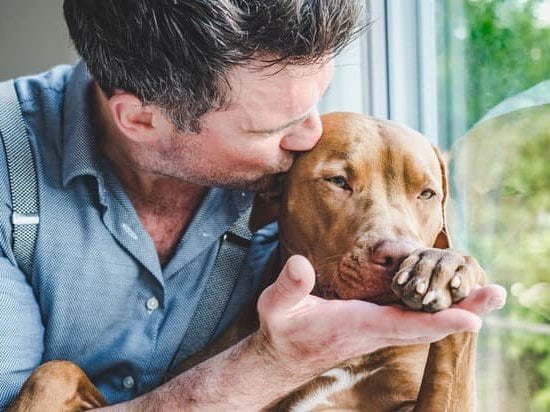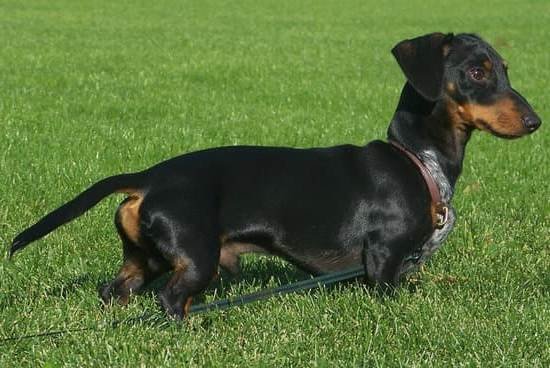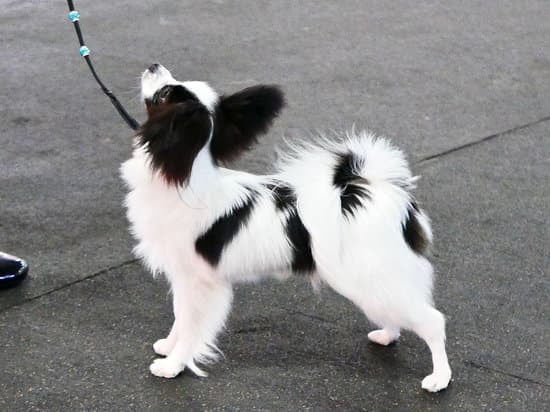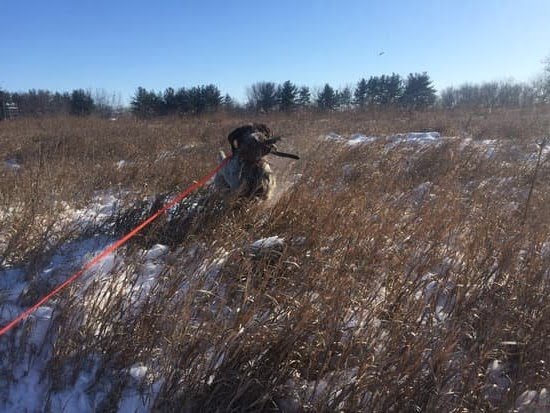Doberman Pinschers are known for their intelligence, loyalty, and strong physique. They make excellent companions and protectors when properly trained and socialized. In this article, we will explore how to train a Doberman Pinscher dog, from understanding the breed’s history to addressing behavioral issues and advanced training techniques.
The Doberman Pinscher has a fascinating history, originally bred by a tax collector named Karl Friedrich Louis Dobermann in Germany during the late 19th century. This breed was specifically developed for personal protection and guarding purposes, with traits such as alertness, fearlessness, and loyalty. Understanding the origins of the Doberman can provide valuable insight into their behavior and training needs.
Early socialization and obedience training are crucial for Doberman Pinscher puppies to help shape their temperament and behavior. This includes exposing them to various people, animals, environments, and experiences to prevent fearfulness or aggression. Additionally, basic training commands such as sit, stay, come, and heel lay the foundation for a well-behaved companion.
As we delve further into this article, we will cover leash training techniques and walking etiquette specific to Doberman Pinschers. We will also explore advanced training methods such as agility and competition obedience, as well as how positive reinforcement compares to correction-based training methods for this breed. Whether you are a new owner or looking to enhance your current Doberman’s training skills, these tips and tricks will guide you towards having a well-behaved and happy companion.
The Importance of Early Socialization and Obedience Training for Doberman Pinscher Puppies
The Doberman Pinscher is known for its loyalty, intelligence, and athleticism. However, without proper training and socialization, these qualities can manifest in undesirable behaviors such as aggression and destructive tendencies. This is why early socialization and obedience training are crucial for Doberman Pinscher puppies.
Early socialization plays a key role in shaping a Doberman’s temperament and behavior. Exposing them to different people, animals, environments, and experiences from a young age helps prevent fearfulness and aggression towards unfamiliar stimuli. It also helps them develop into well-adjusted and confident adult dogs.
Obedience training, on the other hand, sets the foundation for good behavior and manners. Teaching basic commands like sit, stay, come, and heel not only ensures their safety but also fosters a strong bond between the owner and the puppy.
When it comes to training a Doberman Pinscher puppy, consistency is key. Training sessions should be kept short and fun to maintain their interest and attention. Positive reinforcement techniques such as treats, praise, and play should be utilized to encourage good behavior. Avoid using harsh or punitive methods as they can lead to fear or aggression in this sensitive breed.
| Statistic | Number |
|---|---|
| Doberman Pinscher Lifespan | 10-13 years |
| Adult Height (Male) | 26-28 inches |
| Adult Height (Female) | 24-26 inches |
| Adult Weight (Male) | 75-100 pounds |
Basic Training Commands for Doberman Pinschers
As a proud owner of a Doberman Pinscher, it is essential to understand the significance of basic training commands in your dog’s development. These commands form the foundation for a well-behaved and obedient pet. Here are some basic commands for training your Doberman Pinscher:
- Sit: Teaching your Doberman to sit is one of the easiest and most important commands to master. To teach this command, hold a treat close to your dog’s nose and then move your hand up, allowing their head to follow the treat while causing their bottom to lower.
- Stay: The “stay” command is crucial for keeping your Doberman safe in various situations. Start by making your dog sit, then hold out your palm in front of them and say “stay” while taking a step back. Reward them with praise and treats when they stay in place.
- Come: Teaching your Doberman to come when called can be lifesaving. Begin in a quiet area, attach a long leash, call their name followed by “come”, gently tug on the leash if necessary, and reward them when they get to you.
- Heel: Heeling teaches your dog proper walking etiquette without pulling or straining on the leash. Hold treats in the hand closest to them while giving the “heel” command and reward them when they walk calmly by your side.
Training these basic commands will create a strong foundation for further obedience training activities.
Remember that consistency, patience, and love are key elements in how to train a Doberman Pinscher dog. Practicing these basic commands regularly will reinforce good behavior in your furry companion. With time and dedication, you will have a well-behaved and happy Doberman Pinscher that responds reliably to your commands.
Leash Training and Walking Etiquette for Doberman Pinschers
Leash training is an essential part of obedience training for Doberman Pinschers. These powerful and energetic dogs need to learn how to walk calmly on a leash to ensure their safety and the safety of others. It’s important to start leash training at an early age so that your Doberman puppy can develop good walking etiquette from the beginning.
Start Early
The best time to start leash training your Doberman puppy is as soon as they have completed their vaccinations and are able to go out for walks. Begin by getting them used to wearing a collar or harness, and then introduce them to the leash gradually. Start with short walks in quiet, low-distraction areas, and gradually increase the duration and complexity of the walks as your puppy gets more comfortable.
Consistent Training
Consistency is key when it comes to leash training a Doberman Pinscher. Use positive reinforcement techniques, such as treats and praise, to encourage good behavior on the leash. If your dog pulls or becomes overly excited during walks, stop walking and wait for them to calm down before continuing. By consistently reinforcing good behavior and calmly addressing unwanted behaviors, you can help your Doberman learn proper walking etiquette.
Walking Etiquette for Doberman Pinschers
Maintaining Control
Doberman Pinschers are strong and powerful dogs, so it’s important for owners to maintain control during walks. Use a sturdy leash and practice proper handling techniques to ensure that your dog stays by your side and follows your lead. Avoid allowing your Doberman to pull or dictate the pace of the walk, as this can lead to undesirable behaviors in the long run.
Positive Reinforcement
During walks, use positive reinforcement methods to encourage good walking behavior in your Doberman. Reward them with treats or verbal praise when they walk calmly by your side or respond well to commands such as “heel” or “sit.” By consistently rewarding desired behaviors, you can help instill good walking etiquette in your Doberman Pinscher.
By incorporating these training techniques into your routine, you can help ensure that your Doberman Pinscher becomes a well-behaved and obedient companion during walks. Remember that patience, consistency, and love are key components of successful leash training for any dog breed, including the majestic Doberman Pinscher.
Advanced Training Techniques for Doberman Pinschers
Doberman Pinschers are intelligent and energetic dogs that excel in advanced training techniques such as agility, rally, and competition obedience. These activities not only provide mental and physical stimulation for your Doberman, but they also strengthen the bond between you and your canine companion. Agility training involves teaching your Doberman to navigate through obstacles such as tunnels, jumps, and weave poles in a timed course.
Rally obedience focuses on completing a series of tasks while following a set of signs with different instructions. Competition obedience requires the highest level of obedience, precision, and focus from your Doberman.
Agility training is an excellent way to channel your Doberman’s energy into a fun and challenging activity. It also enhances their physical coordination, strength, and overall fitness. To begin agility training with your Doberman, start with basic obstacles such as jumps and tunnels. As they become more proficient, gradually introduce more complex elements like weave poles and A-frames. Positive reinforcement is crucial during agility training to keep your Doberman motivated and engaged.
Rally obedience is another great way to advance your Doberman’s training beyond basic commands. This activity involves completing a series of tasks while walking together through a course with various signs that indicate specific exercises or commands to perform.
Rally obedience is both mentally stimulating for your dog and rewarding for you as their handler. Competing in rally events can be a fulfilling experience for both you and your Doberman, as it showcases their obedience skills in a structured environment.
Positive Reinforcement vs Correction-Based Training Methods
When it comes to training a Doberman Pinscher, it is essential to consider the most effective training methods. Positive reinforcement and correction-based training are two popular approaches that can be used to train a Doberman Pinscher. Each method has its own benefits and drawbacks, and it is important for dog owners to understand which approach works best for their specific dog.
Positive reinforcement involves rewarding your Doberman Pinscher for displaying desired behaviors, such as sitting on command or walking politely on a leash. This can be done using treats, toys, or verbal praise. On the other hand, correction-based training involves using aversive stimuli to discourage unwanted behaviors, such as using a choke chain to correct pulling on the leash or using a firm “no” command.
- Creates a positive association with training
- Builds trust and strengthens the bond between owner and dog
- Encourages voluntary cooperation from the dog
- Can lead to fear or anxiety in the dog
- May cause aggression or avoidance behaviors
- Does not address the root cause of behavioral issues
Addressing Behavioral Issues in Doberman Pinschers
Doberman Pinschers are known for their loyalty and protective nature, but without proper training and socialization, they can exhibit behavior issues such as aggression, anxiety, and destructive behavior. Aggression in Dobermans can stem from fear, territorial instincts, or lack of socialization, making it crucial to address these issues early on.
An anxious Doberman may display signs of restlessness, excessive barking, or destructive behavior when left alone. It’s important to understand the root cause of their anxiety in order to effectively address it.
One effective way to address behavioral issues in Doberman Pinschers is through positive reinforcement training. This method focuses on rewarding desirable behaviors rather than punishing unwanted ones. For example, if a Doberman displays aggression towards strangers, they can be rewarded with treats and praise for calm and non-aggressive behavior. This helps them associate positive outcomes with being calm in certain situations.
Another important aspect of addressing behavioral issues in Doberman Pinschers is consistency in training and setting clear boundaries. Dogs thrive on routine and structure, so it’s important to establish consistent rules and expectations for their behavior.
Additionally, providing mental stimulation through interactive toys and regular exercise can help alleviate anxiety and prevent destructive behavior in Dobermans. By understanding the underlying causes of aggression, anxiety, and destructive behavior in Doberman Pinschers and using positive reinforcement methods consistently, owners can help their dogs become well-behaved and happy companions.
Training Tips and Tricks for a Well-Behaved and Happy Doberman Pinscher
In conclusion, training a Doberman Pinscher requires patience, consistency, and love. Understanding the history and breed overview of the Doberman Pinscher is essential in tailoring training methods that are suitable for this intelligent and loyal breed. Early socialization and obedience training for Doberman Pinscher puppies set the foundation for a well-behaved adult dog, making it crucial to start training at an early age.
Basic training commands such as sit, stay, come, and heel are essential for a well-behaved Doberman Pinscher. Leash training and walking etiquette are also important to ensure that your Doberman is well-behaved in public. Additionally, advanced training techniques like agility, rally, and competition obedience can provide mental stimulation for this highly intelligent breed.
When it comes to addressing behavioral issues in Doberman Pinschers such as aggression, anxiety, or destructive behavior, it’s important to use positive reinforcement methods instead of correction-based training. Consistency in training methods and patience are key to overcoming behavioral issues effectively.
By implementing these tips and tricks with love and affection, you can ensure that your Doberman Pinscher is not only well-behaved but also happy. With the right approach and dedication, anyone can learn how to train a Doberman Pinscher dog effectively.
Frequently Asked Questions
Are Doberman Pinschers Easy to Train?
Doberman Pinschers are intelligent and quick learners, which can make them relatively easy to train. However, they also have a strong-willed nature, so consistent and firm training is necessary to establish leadership.
How Do You Discipline a Doberman?
When disciplining a Doberman, it’s important to be consistent, calm, and assertive. Positive reinforcement for good behavior is key, while using firm commands and clear boundaries to correct unwanted behavior is also necessary.
Can I Train My Doberman Myself?
It is possible to train your Doberman yourself, especially if you are dedicated, patient, and knowledgeable about dog training techniques. However, seeking professional guidance or obedience classes can also be beneficial in ensuring that your Doberman receives proper training and socialization.

Welcome to the blog! I am a professional dog trainer and have been working with dogs for many years. In this blog, I will be discussing various topics related to dog training, including tips, tricks, and advice. I hope you find this information helpful and informative. Thanks for reading!





